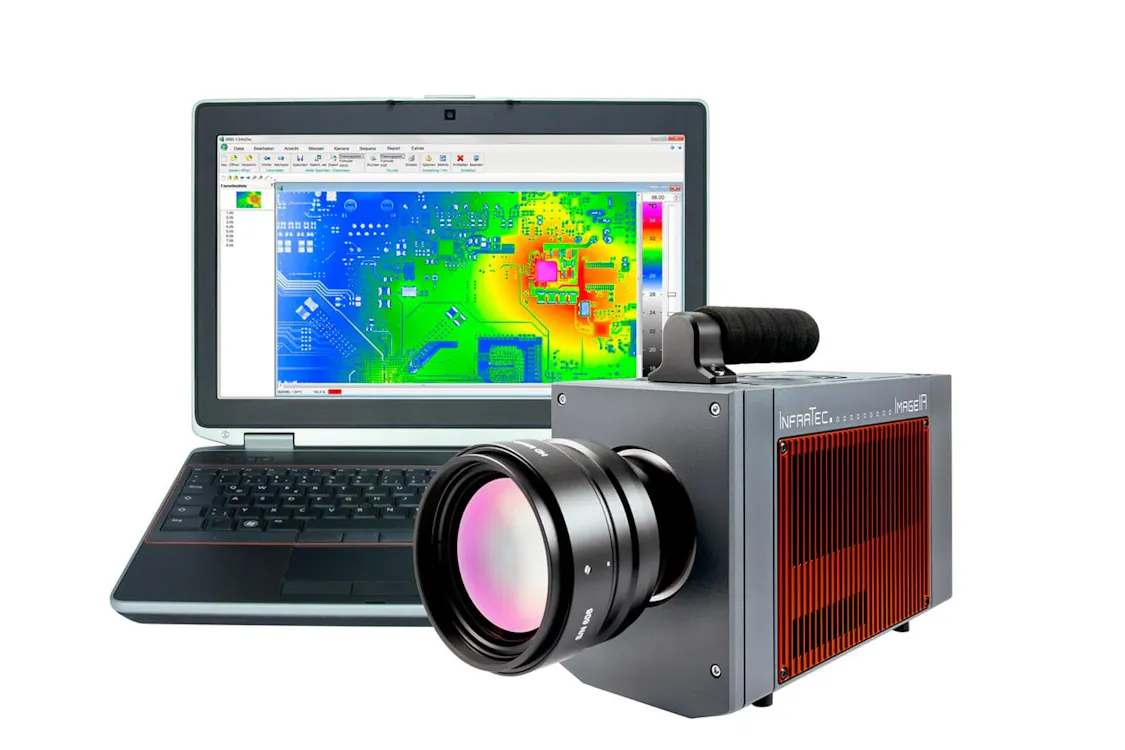
The Intelligent Solution
When exchanging thoughts and ideas on the latest developments in thermal image and thermographic cameras, the discussions increasingly focus on the constantly growing data volumes. It is not without reason that events such as this year's Quantitative Infrared Thermography Conference (QIRT) include topics such as data reduction during image processing on the scientific agenda. InfraTec is following these discussions actively and contribute its own ideas on a regular basis. The latest discussions concern the compression of thermographic measurement data in real time.
Increasingly larger detector formats are leading to ever larger data volumes
With the ImageIR® high-resolution thermographic camera series InfraTec has set a milestone this year in matters of geometrical resolution. The (1,920 × 1,536) IR-pixels of the ImageIR® 10300 model mark the world's best value among cameras, which are intended for civil use and utilise cooled FPA photon detectors. For this reason, recorded thermographic images and sequences contain correspondingly large data volumes. Users want to access these conveniently – in other words, quickly and with as little loss as possible.
Interfaces commonly used at present will quickly become a bottleneck here. For example, the GigE interface with a data rate of 1 Gbit/s noticeably limits the performance of thermographic cameras. Even a mass storage device integrated in cameras does not solve the problem. It deprives other components of valuable space, causes additional heat within the camera due to its power dissipation and only offers limited storage capacity. Moreover, the increase in the camera price is not insignificant.
Data compression in real time
Therefore, InfraTec together with scientists at the University of Stuttgart is taking a different approach. The objective here is to simultaneously reduce the thermograms already during their formation from the data volume. The keyword is real time compression. With this intelligent type of compression, the limits in which the digital values of the individual pixels are compressed can be determined exactly.
Initial results show the direction in which the development can go. The team comprising scientists and practitioners has already been able to compress measurement data by up to 80 percent in comparison with the original size, without decisively losing image quality and measurement accuracy. There is still a long way to go here. The project, being funded by the Federal Ministry for Economic Affairs and Energy and its program „Zentrales Innovationsprogramm Mittelstand (ZIM)“, will finally run until summer 2017. The collaborative work should then have progressed to such an extent that it will be possible to integrate the intelligent data compression into software solutions of InfraTec.
Alternative 10 GigE
In the meantime, InfraTec is equipping its high-end series ImageIR® with a 10 GigE interface. This allows users a data transmission rate of 10 Gbit/s thereby exceeding the performance of a conventional GigE interface significantly. Thanks to this solution, the transmission of thermographic sequences has become possible for the top model of the series, ImageIR® 10300, which is recorded at a frame rate of 100 Hz in full frame mode corresponding to a data rate of more than 4.7 Gbit/s.